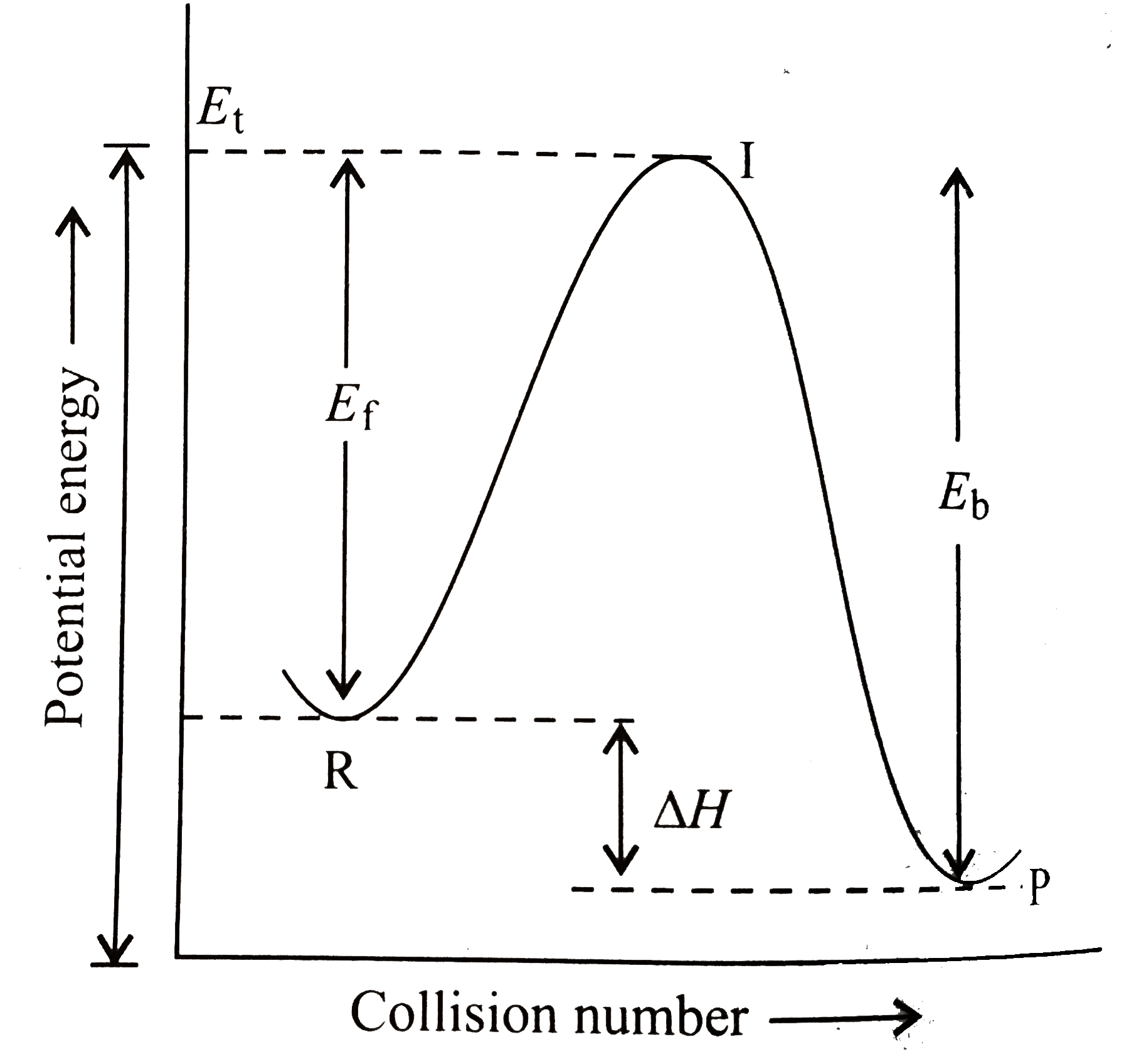Two reactions A → Products and B→ products have rate constants kA and kB respectively at temperature T and activation energies EA and EB respectively . If kA>KB and EA<EB and assuming that A for both the reactions is same then : Solution in Kannada
at higher temperature kA will be greater than kB
at lower temperature kA and kB will be close to each other in magnitude
as temperature increases kA and kB will become close to each other in magnitude .
at lower temperature kb>kA
The correct Answer is:B
Step by step video, text & image solution for Two reactions A rarr Products and Brarr products have rate constants k_(A) and k_(B) respectively at temperature T and activation energies E_(A) and E_(B) respectively . If k_(A) gt K_(B) and E_(A) lt E_(B) and assuming that A for both the reactions is same then : by Chemistry experts to help you in doubts & scoring excellent marks in Class 12 exams.
Updated on:21/07/2023Topper's Solved these Questions
- CHEMICAL KINETICS Book:MODERN PUBLICATIONChapter:CHEMICAL KINETICS Exercise:Multiple Choice Questions (Level-II)
Explore 50 Videos
- CHEMICAL KINETICS Book:MODERN PUBLICATIONChapter:CHEMICAL KINETICS Exercise:Multiple Choice Questions (Level-III)
Explore 9 Videos
- CHEMICAL KINETICS Book:MODERN PUBLICATIONChapter:CHEMICAL KINETICS Exercise:Multiple Choice Questions ( Measuring Order of a Reaction : Integrated rate equation half life period )
Explore 27 Videos
- CHEMICAL BONDING AND MOLECULAR STRUCTURE Book:MODERN PUBLICATIONChapter:CHEMICAL BONDING AND MOLECULAR STRUCTURE Exercise:Recent Examination Questions
Explore 17 Videos
- CHEMISTRY IN EVERY DAY LIFE Book:MODERN PUBLICATIONChapter:CHEMISTRY IN EVERY DAY LIFE Exercise:Recent Examination Questions
Explore 4 Videos
Similar Questions
A first order reaction is carried out starting with 10 mol L−1 of the reactant . It is 40% complete in 50 min . If the same reaction is carried out with an initial concentration of 5 mol L−1 the percentage of reaction that is completed in 50 min is
View SolutionThe half life period of a first order chemical reaction is 6.93 minutes . The time required for the completion of 99% of the chemical reaction will be ( log 2 = 0.301 ) :
View SolutionFor a zero order reaction :
A→B
a graph of rate vs . Time has slope equal to :
View SolutionAmong the following, the compound that contains ionic, covalent and coordinate linkage is :
View SolutionOils are liquids at room temperature since they contain higher percentage of
View SolutionTwo reaction : X→ Products and Y→ Products have rate constants k1 and k2 at temperature T and activation energies E1 and E2, respectively. If k1>k2 and E1<E2 (assuming that the Arrhenius factor is same for both the Products), then
(I) On increaisng the temperature, increase in k2 will be greater than increaisng in k1.
(II) On increaisng the temperature, increase in k1 will be greater than increase in k2.
(III) At higher temperature, k1 will be closer to k2.
(IV) At lower temperature, k1<k2
View SolutionA colliison between reactant molecules must occur with a certain minimum energy before it is effective in yielding Product molecules. This minimum energy is called activation energy Ea Large the value of activation energy, smaller the value of rate constant k. Larger is the value of activation energy, greater is the effect of temperature rise on rate constant k.

Ef= Activation energy of forward reaction
Eb= Activation energy of backward reaction
ΔH=Ef−Eb
Ef= threshold energy
For two reactions, activation energies are Ea1 and Ea2, rate constant are k1 and k2 at the same temperature. If k1>k2, then
View SolutionA reaction takes place in theee steps: the rate constant are k_(1), k_(2), and k_(3) . The overall rate constant k=(k_(1)k_(3))/(k_(2)) . If E_(1), E_(2) , and E_(3) (energy of activation) are 60, 30 and 10kJ , respectively, the overall energy of activation is
View SolutionThe rate constant K1 of a reaction is found to be double that of rate constant K2 of another reaction. The relationship between corresponding activation energies of the two reaction at same temperature (E1andE2) can be represented as:
View SolutionA reactant (A) forms two products A overset (k_(1))rarr B , Activation energy E_(a1) A overset (k_(2))rarr C , Activation energy E_(a2) If E_(a_(2)) = 2E_(a_(1)) then k_(1) and k_(2) are related as
View SolutionTwo reactions A→ products and B→ products have rate constants ka and kb respectively at temperature T and activation energies are Ea and Eb respectively.
If ka>kb and Ea<Eb and assuming the freuency factor A in both the reactions are same then
View SolutionA reaction takes place in three steps. The rate constant are k1,k2 and k3. The overall rate constant k=k1k3k2. If E1,E2 and E3 (energy of activation) are 60, 30 and 10 kJ, respectively, the overall energy. Of activation is
View SolutionThe rate constant (k1) of one of the reactions is found to be double than that of the rate constant (k2) of another reaction. The relationship between the corresponding activation energies of the two reactions Ea1<Ea2
View SolutionTwo reaction A→ products and B→ products have rate constant ka and kb at temperature T and activation energies Ea and Eb respectively. If ka>kb and Ea<Eb and assuming that a for both the reactions is same then :
View Solution2A rarr B+C The mechanism of the above reaction given as 2A overset(K_(1))underset(K_(2))hArrX+2B (fast) X+B overset(K_(3))rarrC (slow) E_(1) = Activation energy for K_(1) K_(2) = Activation energy for K_(2) E_(3) =Activation energy for K_(3) Calculate E_("reaction") (given : E_(1) =10 kJ, E_(3)=5 kJ, E_(2) =12 kJ)
View Solution